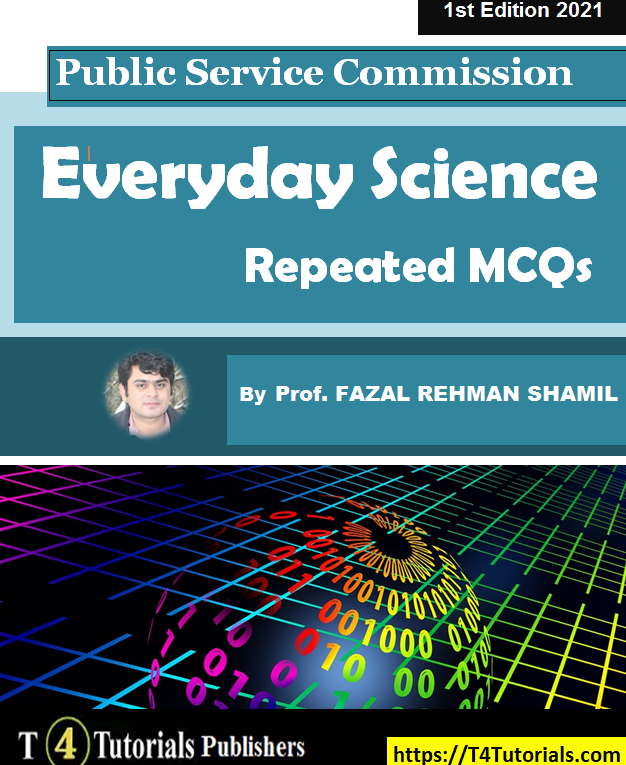NTS Everyday Science MCQs
What do we use to measure the velocity?
(A). Anemometer
(B). Speedometer
(C). Odometer
(D). Hygrometer
(E). None of these
Multiple Choice Question Answer: B
What is The chemical name of Laughing gas?
(A). Nitric oxide
(B). Nitrous oxide
(C). Nitrogen pentoxide
(D). Nitrogen dioxide
(E). None of these
Multiple Choice Question Answer: B
The sub-class of neutron star that is known for its very high magnetic field is ______
(A). Quasar
(B). Magnetar
(C). Magneto
(D). Magnetta
(E). None of these
Multiple Choice Question Answer: B
In a typical H-R diagram, how the stars are graphed?
(A). By Size and distance
(B). By Luminosity and distance
(C). By Distance and temperature
(D). By Temperature and luminosity
(E). None of these
Multiple Choice Question Answer: D
What is a star called, when it becomes a singularity and has zero volume and infinite density?
(A). Black hole
(B). Blue giant
(C). Wolf-Raynet star
(D). White dwarf
(E). None of these
Multiple Choice Question Answer: A
What is The PSR J0108-1431 that closest to the Earth?
(A). Black hole
(B). Red giant
(C). Pulsar
(D). Quasar
(E). None of these
Multiple Choice Question Answer: C
What are the Particle clouds from which stars are formed?
(A). Star clouds
(B). Stellar nurseries
(C). Event horizons
(D). Singularities
(E). None of these
Multiple Choice Question Answer: B
What is the Antares?
(A). The largest known Quasars Star
(B). The largest known Pulsars Star
(C). The largest known Red Super-giants Star
(D). The largest known White Dwarfs Star
(E). None of these
Multiple Choice Question Answer: C
What is The sun is made up of 99.9%?
(A). Oxygen and Hydrogen
(B). Hydrogen and Sulfur
(C). Hydrogen and Helium
(D). Carbon and Silicon
(E). None of these
Multiple Choice Question Answer: C
Big Dipper is a part of _______ constellation
(A). Ursa Major
(B). Ursa Minor
(C). A. and B. above
(D). The Great Bear
(E). None of these
Multiple Choice Question Answer: C
What is the Pedosphere is sum of?
(A). Air
(B). Soil and water
(C). Organisms
(D). All of above
(E). None of these
Multiple Choice Question Answer: D
How do we classify the Sum of all ecosystems?
(A). Aero sphere
(B). Biosphere
(C). Ionosphere
(D). Ozonosphere
(E). None of these
Multiple Choice Question Answer: B
What is the average salinity of salt as per kilogram of water of ocean?
(A). 32 grams
(B). 55 grams
(C). 35 grams
(D). 42 grams
(E). None of these
Multiple Choice Question Answer: C
What is the percentage of protein content in the wheat?
(A). 9%
(B). 12%
(C). 15%
(D). 19%
(E). None of these
Multiple Choice Question Answer: C
The Vitamin that gets destroyed on heating is ________
(A). B
(B). E
(C). C
(D). K
(E). None of these
Multiple Choice Question Answer: C
How the Alzheimer’s disease in human beings is characterized?
(A). By the degeneration of Kidney cells
(B). By the degeneration of Spleen cells
(C). By the degeneration of Liver cells
(D). By the degeneration of Nerve cells
(E). None of these
Multiple Choice Question Answer: D
Read More MCQs of everyday Science
- Everyday Science MCQs
- Everyday Science Multiple Choice Questions
- Everyday Science MCQs pdf
- Everyday Science MCQs with Answers
- Everyday Science MCQs PPSC
- Everyday Science MCQs FPSC
- Everyday Science MCQs Past Papers
- NTS Everyday Science MCQs
- Important MCQs Everyday Science
- 10,000+ General Knowledge MCQs

MCQs collection of solved and repeated MCQs with answers for the preparation of competitive exams, admission test and the job of PPSC, FPSC, UPSC, AP, APPSC, APSC, BPSC, PSC, GOA, GPSC, HPSC, HP, JKPSC, JPSC, KPSC, KERALAPSC, MPPSC, MPSC, MPSCMANIPUR, MPSC, NPSC, OPSC, RPSC, SPSCSKM, TNPSC, TSPSC, TPSC, UPPSC, UKPSC, SPSC, KPPSC, BPSC, AJKPSC ALPSC, NPSC, LPSC, SCPSC, DPSC, DCPSC, PSC, UPSC, WVPSC, PSCW, and WPSC.


